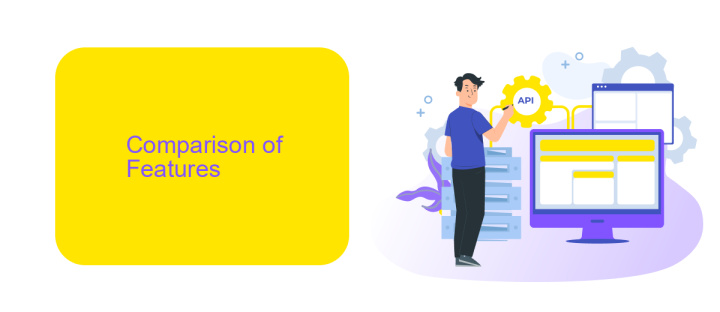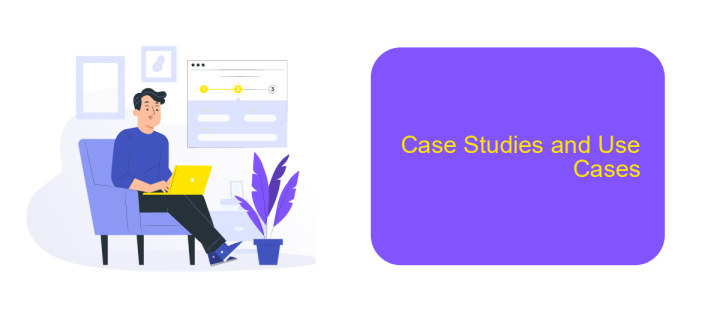Google Apigee Vs AWS Api Gateway
In today's digital landscape, managing APIs effectively is crucial for businesses aiming to enhance their service delivery and streamline operations. Two leading solutions in the API management space are Google Apigee and AWS API Gateway. This article delves into a comparative analysis of these platforms, examining their features, benefits, and potential use cases to help you make an informed decision.
Introduction
In the dynamic landscape of API management, two prominent players stand out: Google Apigee and AWS API Gateway. Both platforms offer robust features for creating, deploying, and managing APIs, but they cater to different needs and use cases. Understanding the strengths and weaknesses of each can help businesses make informed decisions on which platform to adopt for their specific requirements.
- Google Apigee: Known for its comprehensive API management capabilities, including traffic management, security, and analytics.
- AWS API Gateway: Integrates seamlessly with other AWS services, providing a scalable and cost-effective solution for API management.
Choosing between Google Apigee and AWS API Gateway depends on various factors such as existing infrastructure, specific feature requirements, and budget constraints. Additionally, integration services like ApiX-Drive can further streamline the process by automating data transfer between different applications, enhancing the overall efficiency of API management. By evaluating these aspects, businesses can ensure they select the right tool to meet their API management needs.
Comparison of Features

Google Apigee and AWS API Gateway both offer robust solutions for managing APIs, yet they cater to different needs. Apigee excels in providing advanced analytics, comprehensive security features, and a user-friendly interface for API management. It supports multi-cloud environments and offers extensive capabilities for traffic management, API monetization, and developer engagement. Apigee's integration with Google Cloud services further enhances its appeal for enterprises looking for a scalable and efficient API management platform.
On the other hand, AWS API Gateway is deeply integrated with the AWS ecosystem, making it an excellent choice for users already leveraging AWS services. It provides seamless integration with AWS Lambda, IAM, and other AWS services, offering a highly scalable and cost-effective solution for API management. While it may not offer the same level of analytics as Apigee, AWS API Gateway excels in ease of use and integration within the AWS environment. For businesses needing to streamline integrations, services like ApiX-Drive can be utilized to connect various applications and automate workflows, enhancing the overall efficiency of API management.
Pricing and Support

When it comes to pricing, Google Apigee and AWS API Gateway offer different models that cater to varied business needs. Google Apigee typically provides a subscription-based pricing model, which includes different tiers like Standard, Enterprise, and Enterprise Plus. These tiers vary in terms of features, API call volumes, and support services. AWS API Gateway, on the other hand, adopts a pay-as-you-go pricing model, where you are charged based on the number of API calls, data transfer, and additional features like caching.
- Google Apigee:
- Subscription-based pricing
- Multiple tiers (Standard, Enterprise, Enterprise Plus)
- Includes support services
- AWS API Gateway:
- Pay-as-you-go pricing
- Charges based on API calls and data transfer
- Optional caching features
In terms of support, both platforms offer comprehensive support services, but the level of support can vary based on the pricing tier or plan. Google Apigee provides 24/7 support for higher-tier subscriptions, while AWS API Gateway offers different support plans ranging from Basic to Enterprise. Additionally, for businesses looking to streamline API integrations, services like ApiX-Drive can be a valuable tool, offering automated workflows and easy integration setups with both Google Apigee and AWS API Gateway.
Case Studies and Use Cases

In the realm of API management, both Google Apigee and AWS API Gateway have been employed by various companies to great effect. For instance, a leading e-commerce platform used Google Apigee to streamline its API traffic, resulting in improved performance and customer satisfaction. By leveraging Apigee's robust analytics and developer portal, they were able to gain valuable insights and foster a more engaged developer community.
Conversely, a financial services firm opted for AWS API Gateway to manage its APIs securely and efficiently. The firm benefited from AWS's seamless integration with other AWS services, such as Lambda and DynamoDB, which allowed them to build a highly scalable and cost-effective solution. The API Gateway's native support for RESTful APIs and WebSocket APIs also enabled them to cater to a diverse range of client applications.
- A healthcare provider used Google Apigee to ensure compliance with industry standards and regulations while offering a seamless patient experience.
- A logistics company chose AWS API Gateway for its low-latency performance and integration with AWS IoT services, enhancing their real-time tracking capabilities.
- ApiX-Drive was utilized by a marketing firm to facilitate the integration between various APIs, streamlining their data flow and automating routine tasks.
Each of these case studies highlights the unique strengths of Google Apigee and AWS API Gateway in different industry contexts. By understanding the specific requirements and leveraging the right tools, organizations can achieve optimal results in their API management strategies.
Conclusion
In conclusion, both Google Apigee and AWS API Gateway offer robust solutions for API management, but they cater to different needs and preferences. Google Apigee stands out with its comprehensive analytics, developer portal, and advanced security features, making it ideal for enterprises that require extensive API management and monitoring capabilities. On the other hand, AWS API Gateway excels with its seamless integration with other AWS services, cost-effectiveness, and scalability, making it a strong choice for organizations already invested in the AWS ecosystem.
When deciding between the two, it's crucial to consider your organization's specific requirements, existing infrastructure, and long-term goals. Additionally, services like ApiX-Drive can further enhance your API integration processes by providing easy-to-use tools for connecting various applications and automating workflows. Ultimately, the right choice will depend on the unique needs of your business and how each platform aligns with your strategic objectives.
FAQ
What are the key differences between Google Apigee and AWS API Gateway?
Which platform is more suitable for large-scale enterprise use?
Can I use both Google Apigee and AWS API Gateway together?
What are the cost considerations between Google Apigee and AWS API Gateway?
How can I automate and integrate APIs from both platforms?
Apix-Drive is a simple and efficient system connector that will help you automate routine tasks and optimize business processes. You can save time and money, direct these resources to more important purposes. Test ApiX-Drive and make sure that this tool will relieve your employees and after 5 minutes of settings your business will start working faster.

